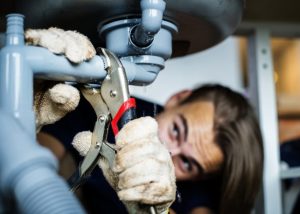This post following next involving Locating water leaks is unquestionably informative. You should investigate it.

Early discovery of dripping water lines can minimize a possible calamity. Besides saving you money, it will certainly decrease the aggravation and aggravation. The moment you locate a leak, calling your plumber for repair work is the very best service. However, some small water leakages may not show up. Below are some hacks that help if you can not find it with your nude eyes.
1. Analyze the Water Meter
Every house has a water meter. Inspecting it is a proven way that assists you uncover leakages. For starters, turn off all the water resources. Ensure no person will flush, utilize the tap, shower, run the washing equipment or dish washer. From there, go to the meter and also watch if it will certainly change. Considering that no one is utilizing it, there need to be no activities. That shows a fast-moving leak if it moves. Likewise, if you find no changes, wait a hr or 2 and also check back again. This implies you may have a slow leak that might even be below ground.
2. Check Water Consumption
Analyze your water costs as well as track your water consumption. As the one paying it, you should notice if there are any kind of disparities. If you identify sudden changes, in spite of your intake being the same, it implies that you have leakages in your plumbing system. Bear in mind, your water expense should drop under the exact same variety monthly. An abrupt spike in your expense indicates a fast-moving leakage.
At the same time, a stable increase on a monthly basis, despite the same behaviors, shows you have a slow leak that's additionally slowly escalating. Call a plumber to extensively check your property, particularly if you really feel a warm location on your floor with piping beneath.
3. Do a Food Coloring Examination
When it comes to water usage, 30% comes from toilets. If the shade somehow infiltrates your bowl throughout that time without flushing, there's a leak in between the storage tank and also dish.
4. Asses Exterior Lines
Don't forget to check your exterior water lines also. Must water leak out of the connection, you have a loosened rubber gasket. One little leakage can waste heaps of water as well as surge your water bill.
5. Analyze the scenario as well as examine
Homeowners need to make it a behavior to inspect under the sink counters and also even inside closets for any kind of bad odor or mold and mildew development. These 2 red flags suggest a leakage so punctual interest is required. Doing routine examinations, also bi-annually, can conserve you from a significant trouble.
Much more significantly, if you know your residence is already old, maintain a watchful eye on your heating units, hoses, pipelines etc. Look for discolorations and deteriorating as most devices and pipelines have a life span. They will certainly likewise naturally weaken because of tear as well as use. Don't wait for it to escalate if you believe dripping water lines in your plumbing system. Call a specialist plumber right away so you do not wind up with an awful mess in your home.
Early detection of dripping water lines can reduce a potential catastrophe. Some small water leakages may not be visible. Checking it is a proven way that aids you discover leaks. One small leakage can throw away loads of water as well as increase your water costs.
If you believe leaking water lines in your plumbing system, don't wait for it to rise.
WARNING SIGNS OF WATER LEAKAGE BEHIND THE WALL
PERSISTENT MUSTY ODORS
As water slowly drips from a leaky pipe inside the wall, flooring and sheetrock stay damp and develop an odor similar to wet cardboard. It generates a musty smell that can help you find hidden leaks.
MOLD IN UNUSUAL AREAS
Mold usually grows in wet areas like kitchens, baths and laundry rooms. If you spot the stuff on walls or baseboards in other rooms of the house, it’s a good indicator of undetected water leaks.
STAINS THAT GROW
When mold thrives around a leaky pipe, it sometimes takes hold on the inside surface of the affected wall. A growing stain on otherwise clean sheetrock is often your sign of a hidden plumbing problem.
PEELING OR BUBBLING WALLPAPER / PAINT
This clue is easy to miss in rooms that don’t get much use. When you see wallpaper separating along seams or paint bubbling or flaking off the wall, blame sheetrock that stays wet because of an undetected leak.
BUCKLED CEILINGS AND STAINED FLOORS
If ceilings or floors in bathrooms, kitchens or laundry areas develop structural problems, don’t rule out constant damp inside the walls. Wet sheetrock can affect adjacent framing, flooring and ceilings.
https://www.servicemasterbyzaba.com/blog/how-to-detect-water-leakage-in-walls/

Do you enjoy reading up on Detecting hidden plumbing leaks? Leave feedback below. We would be glad to see your suggestions about this article. Hoping to see you back again soon. Sharing is nice. You won't know, you could be helping someone out. Thanks a lot for taking the time to read it.